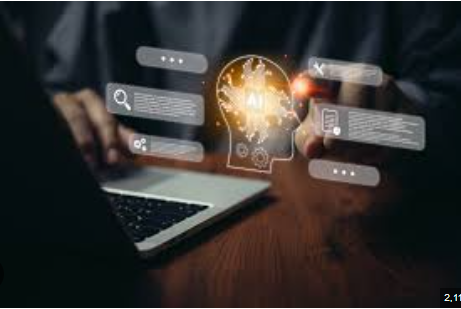Introduction
Imagine having a conversation with someone online and not being able to tell if you’re chatting with a human or an AI. This is becoming more common as AI-generated content, especially from tools like チャットgpt 日本語, floods our digital spaces. For tech enthusiasts, content creators, and digital marketers, distinguishing between AI and human conversations is an emerging challenge that requires both awareness and skill.
In this post, we’re going to explore the world of ChatGPT and its applications, the difficulties in identifying AI-generated content, and the tools and techniques that can help you tell the difference. We’ll also consider the ethical implications and what the future holds for AI in communication. By the end of this guide, you’ll have a solid understanding of how to navigate this evolving landscape.
Understanding ChatGPT and Its Application
What is ChatGPT?
ChatGPT, developed by OpenAI, is a state-of-the-art AI language model designed to generate human-like text based on the input it receives. It uses machine learning techniques to understand context and generate responses that mimic human conversation.
Capabilities of ChatGPT
ChatGPT’s capabilities are vast. It can generate creative writing, assist in customer service, craft social media posts, and even help with coding. Its ability to understand and replicate human language makes it a powerful tool across various industries.
Use Cases in Different Industries
In content creation, ChatGPT can draft articles, blog posts, and social media updates, allowing writers to focus on higher-level creative tasks. In customer service, it can handle routine inquiries, freeing up human agents for more complex issues. For software developers, it can generate code snippets and provide programming assistance. The potential applications are virtually limitless.
The Challenges: Identifying AI-Generated Content
Difficulty in Differentiation
One of the biggest challenges is that AI-generated content often closely resembles human writing. The nuances and subtleties that used to separate human and machine-generated text are becoming increasingly blurred.
Common Tell-Tale Signs
While انستا جولد is sophisticated, it sometimes produces content that lacks emotional depth or contains inconsistencies. Repetition, overly formal language, and lack of personal anecdotes can be indicators. However, these signs can be misleading, as skilled human writers can also produce similar content.
Misleading Indicators
False positives are common when trying to detect AI-generated content. For instance, humans can also write in a mechanical or repetitive manner, especially under tight deadlines or specific constraints. This makes the task of identifying AI-generated content even more complex.
Tools and Techniques for Detection
Introduction to Detection Tools
Several tools have been developed to help identify AI-generated content. These tools use algorithms to analyze text for patterns typically associated with AI writing, such as sentence structure and word choice.
Evaluating Effectiveness
While these tools can be helpful, they are not foolproof. They often struggle with high-quality AI-generated text, which can closely mimic human writing. Tools like GPT-2 Output Detector and OpenAI’s own classifiers offer some assistance but come with limitations.
Limitations of Current Techniques
Current detection techniques can produce false positives or miss subtle AI-generated text. They may also rely heavily on specific data sets, which can limit their effectiveness across different types of content and contexts.
Ethical Considerations and Best Practices
Ethical Implications
The rise of AI-generated content brings significant ethical questions. Transparency about content origin is crucial to maintain trust. Misleading users to believe they are interacting with humans when they are not can erode credibility.
Best Practices for Transparency
Content creators and digital marketers should clearly disclose when content is AI-generated. This can be done through labels, disclaimers, or other forms of transparency. Being upfront helps build trust and sets clear expectations.
Balancing AI and Human Contributions
It’s essential to strike a balance between AI efficiency and human creativity. AI should enhance human work, not replace it. Combining the strengths of both can create more engaging and authentic content.
The Future of ChatGPT and Human Interaction
Predictions for AI in Communication
As AI continues to evolve, its role in communication will expand. We may see more seamless integrations where AI assists in real-time conversations, offering suggestions and support while humans lead the dialogue.
Opportunities for Content Creators and Marketers
AI provides exciting opportunities for content creators and marketers. It can handle routine tasks, allowing professionals to focus on strategic and creative aspects. However, staying updated on AI advancements is crucial to leverage its full potential.
Challenges Ahead
Despite its benefits, AI also poses challenges, such as ensuring ethical use and maintaining transparency. Continuous learning and adaptation will be necessary to address these issues as technology advances.
Conclusion
In this rapidly evolving landscape, understanding the capabilities and implications of AI-generated content is essential. We’ve explored what ChatGPT is, its applications, the challenges in identifying AI-generated content, and the tools and techniques available for detection. We’ve also considered the ethical implications and the future of AI in communication.
For tech enthusiasts, content creators, and digital marketers, mastering the art of distinguishing between AI and human conversations is a valuable skill. It ensures transparency, maintains trust, and leverages the best of both worlds for effective communication.
Engage with us and share your thoughts on this topic. How do you see AI shaping the future of communication? Join the conversation, and let’s explore this fascinating frontier together!



